Recent Articles
Popular Makes
Body Types
2019 Hyundai Tucson Road Test and Review
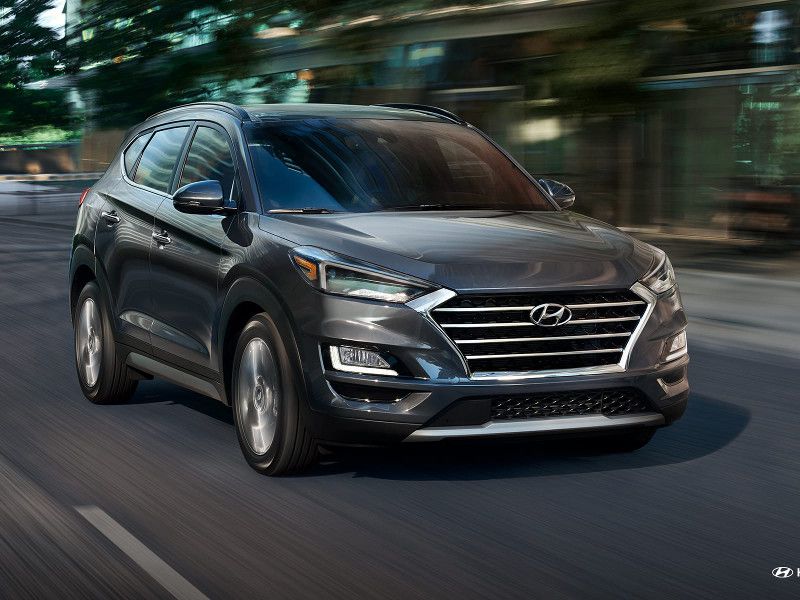
2019 Hyundai Tucson driving in city ・ Photo by Hyundai
The Hyundai Tucson is one of those vehicles that deserves more praise — and more notice — than it typically gets. The compact crossover SUV does many, many things right. At the same time, it is part of a jammed-up segment that features hot-sellers like the Toyota RAV4, Honda CR-V, and the Nissan Rogue. And to be honest, those vehicles seem to have a bit more “personality” than the Hyundai.
At the same time, the Tucson is a rock-solid, high-quality compact SUV that is filled with features and offers the longest warranty of the bunch. What’s not to like about that? The main potential downside of the Tucson versus its above-mentioned competition is that it's a bit smaller inside and out. That could make a difference to you, so give the Tucson a look before you buy. When all is said and done, though, the five-passenger Hyundai Tucson checks all the boxes a buyer in the segment wants checked.
Handsome Exterior
We just mentioned that some of the Tucson's competitors might have a bit more personality. By that, we mean that their exterior and interior styling make more of a statement than the styling of the Tucson. The Hyundai crossover isn’t exactly generic, but it doesn’t try to break new ground with its exterior design. That’s for sure.
The good news is there is nothing wrong with that. While not leading edge, the Tucson’s styling, which was refreshed this year, is attractive and contemporary. If you took the Hyundai badges off it, you might mistake it for an entry-level luxury-brand crossover. The cascading grille is bold but not over-the-top, and mid- and upper-level trims include 19-inch alloy wheels with beefy 245/45R19 tires that give the vehicle a premium look. That look is enhanced by LED daytime running lights, LED headlights, and LED taillights. The Tucson’s styling won’t have pedestrians pointing at it on every street corner, but it is certainly good-looking and cleanly styled.
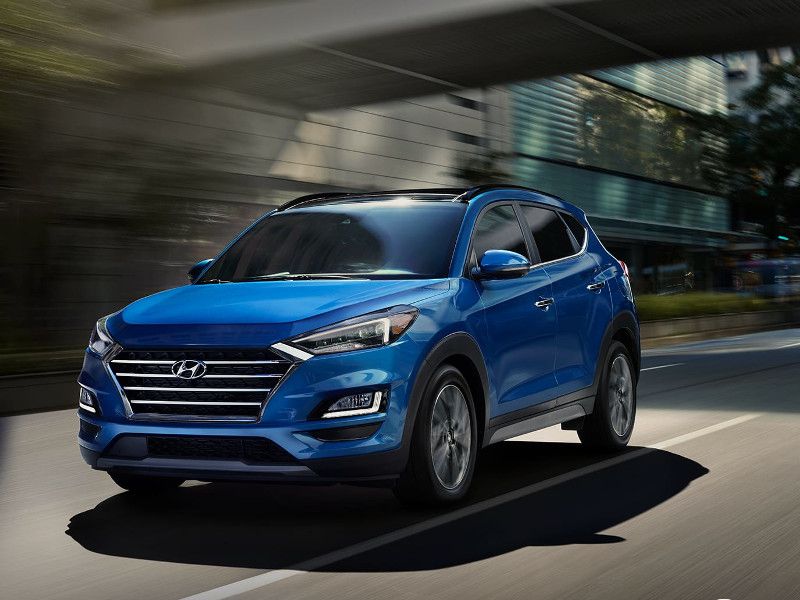
Photo by Hyundai
Interior With Contemporary Style
The Hyundai Tucson forgoes gimmicky interior controls and instead adopts a calm, subtle demeanor that is essentially a scaled-down luxury interior. Perhaps the most prominent feature is the infotainment unit that is perched atop two centrally located vents. To its credit, the touchscreen is accompanied by two very familiar round knobs to control volume and radio station tuning.
Below the vents, immediately to the right of the push-button start, are the straightforward heating, ventilation and air conditioning controls. They utilize a combination of dedicated buttons and two round knobs of their own. It is a system that will not require a deep dive into the owner’s manual to understand. The round-dial instrumentation in a hooded area immediately in front of the driver is equally straightforward. Depending upon the trim level, the seating ranges from comfortable to sumptuous, and some of the up-level trims feature perforated leather. Among the available niceties are hands-free liftgate with automatic opening feature and an auto-dimming inside rearview mirror with HomeLink.
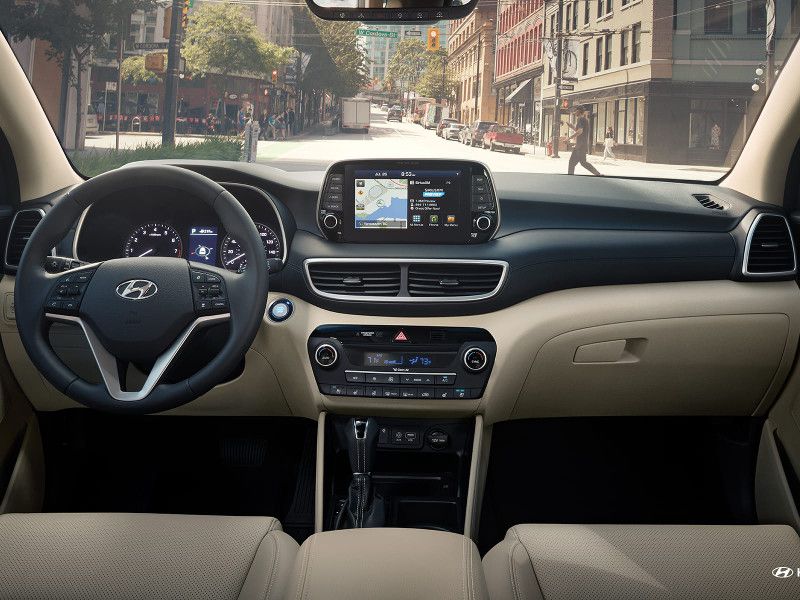
Photo by Hyundai
Infotainment
Those who design vehicles in the compact crossover segment seem to enjoy creating innovative controls for the infotainment system. We love creativity, but many of the systems that result are difficult to understand and use. Hyundai keeps things more conventional, and while it might not win design awards, it is certainly helpful to drivers and passengers alike.
The 2019 Hyundai Tucson’s infotainment system employs a touchscreen flanked on both sides by well-identified dedicated buttons. In addition, it features two round knobs for on-off/volume and changing radio stations. The 7-inch full-color touchscreen requires just seconds to learn, and the system features Apple CarPlay and Android Auto. The audio system offers AM/FM/MP3 functions (not surprising) and has both USB and aux input jacks. The touchscreen unit is supplemented by a 3.5-inch LCD multi-information display immediately in front of the driver. A Blue Link connected car system with three years of complimentary Blue Link services is available on virtually every trim level.
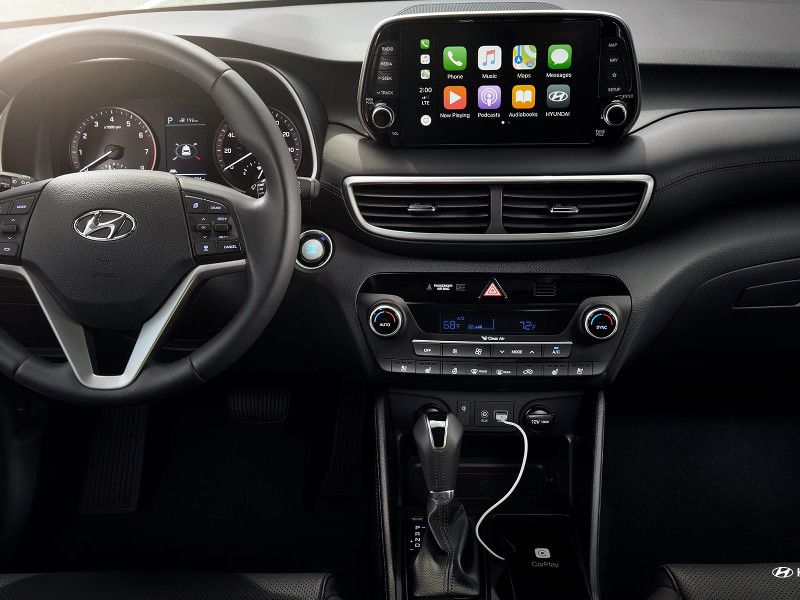
Photo by Hyundai
Powertrains
The 2019 Hyundai Tucson offers two engine choices. The base 2.0-liter in-line four-cylinder GDI engine delivers its 161 horsepower and 150 lb-ft of torque through standard front-wheel drive or available all-wheel drive. The six-speed automatic transmission offers an overdrive lock-up torque converter, an electronic shift lock system, and manual shift mode.
The uplevel engine is the Theta 2.4-liter GDI 4-cylinder that delivers 181 horsepower and 175 lb-ft of torque, and it too can be teamed with front- or all-wheel drive. It is the standard engine on SEL and higher trim levels. The Toyota RAV4 and Honda CR-V are two of the vehicles in the segment that offer more horsepower, but the slightly smaller Tucson feels very good with the 181-horsepower engine and its conventional automatic transmission. Both Honda CR-V and Nissan Rogue use continuously variable transmissions.
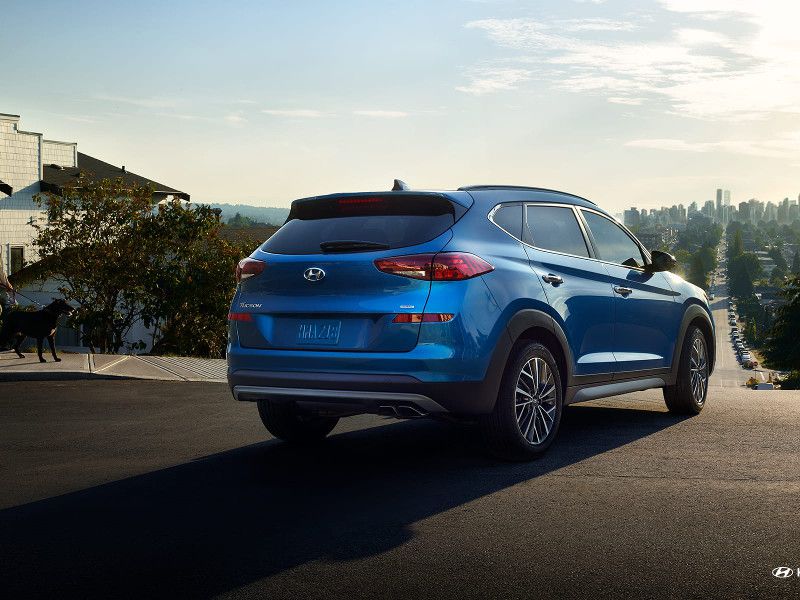
Photo by Hyundai
Driving Impressions
As with its styling, there is nothing especially distinctive about the Tucson's driving demeanor. Its suspension settings seem skewed toward a smooth, comfortable ride versus sharp handling, and that seems like a logical thing to do in this segment. Buyers of compact utilities are going to use them as everyday “drivers” for commuting and shopping duty. They are unlikely to take them canyon-carving.
The front-drive Tucsons offer better fuel economy, while the all-wheel-drive versions deliver medium-duty off-road ability in addition to very pleasant on-road driving. The steering has reasonable on-center feel, and understeer is about what you’d expect from this type of vehicle. The bottom line is that most compact SUV buyers will find that the Tucson’s ride and handling will fulfill their expectations.

Photo by Hyundai
Safety and Driver Aids
For 2019, Hyundai added significant electronic driving aids to the Tucson. The new Hyundai SmartSense safety technologies are standard across the line, something we applaud. Some other brands only offer electronic safety aids in optional packages or on top trim levels.
The SmartSense safety suite includes a forward collision warning with automatic emergency braking, lane-keeping assistance, and a driver attention warning. The first of those systems uses radar to help detect another vehicle and alert the driver of a potential collision. If the driver does not react to avoid the impact, the system may apply emergency braking. Blind-spot monitoring with a rear cross-traffic alert is now standard on all Tucson models as well, along with stability management, stability control, traction control, antilock brakes, front and side airbags, and a rearview camera with dynamic guidelines.

Photo by Hyundai
Interior and Cargo Space
As we mentioned, the Hyundai Tucson offers a very pleasant driving experience, but one of the costs is in interior space. The Tucson isn’t as big as some of its key compact SUV competitors. For example, it is 4 inches shorter in overall length and 2 inches shorter in height than the Honda CR-V.
Those dimensions make a difference in interior room and cargo space. The CR-V offers 75.8 cubic feet of maximum cargo space while the Tucson offers 61.9. The CR-V’s cargo area with both rows in use is 39.2 cubic feet, while the Tucson’s cargo area is 31.0 cubic feet, which is still quite roomy. In the front seats, the difference in interior space is not really an issue, but in the rear, the CR-V offers 2 inches of additional legroom.
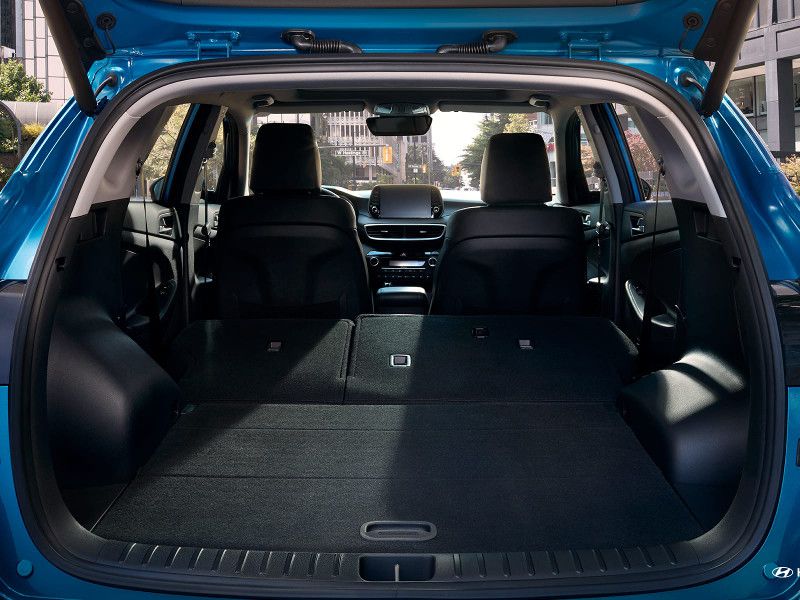
Photo by Hyundai
Fuel Economy
The Hyundai Tucson’s engines offer good fuel consumption numbers, but they lag a bit behind the most economical in the segment. Fuel economy for the front-drive 2.0-liter four-cylinder Tucson is 23 mpg city/30 mpg highway/26 mpg combined. With all-wheel drive, the 2.0-liter 4-cylinder-powered Tucson is EPA-rated at 22 mpg city/25 mpg highway/23 mpg combined.
The uplevel 2.4-liter Tucson has EPA ratings of 22 mpg city/28 mpg highway/25 mpg combined, while its all-wheel drive version drops to 21 mpg city/26 mpg highway/23 mpg combined. For comparison, the front-drive Honda CR-V achieves EPA ratings of up to 28 mpg city/34 mpg highway/30 mpg combined.
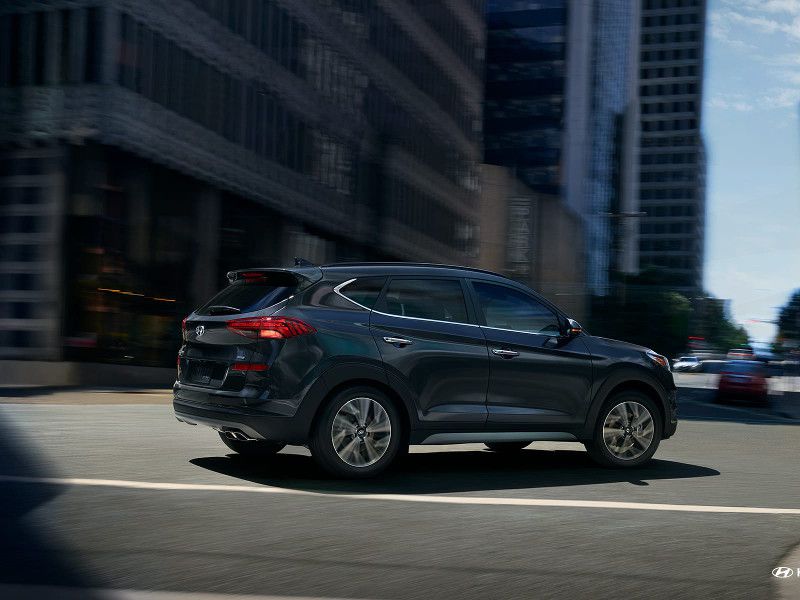
Photo by Hyundai
Wealth of Trim Levels
The 2019 Hyundai Tucson crossover is offered in a dazzling number of trim levels, so many that even Hyundai dealers might have trouble keeping them straight. There are seven in all: SE, Value, SEL, Sport, Night, Limited, and Ultimate.
Given this, you might expect the lowest level SE and Value trims to be rudimentary, but instead, they are pretty well equipped. And the level of equipment rises from there. A big differentiator is the higher-horsepower 2.4-liter four-cylinder engine, which is standard in the SEL, Sport, Night, Limited, and Ultimate. The mid-range Sport trim has a nice array of equipment, and it is aimed at outdoor enthusiasts. At the top is the Ultimate trim, which, as you probably guessed, is very close to being all-inclusive. All-wheel drive is a key option, which means you can buy a front-drive Tucson Ultimate — good news for those living in warm-weather areas of the country.
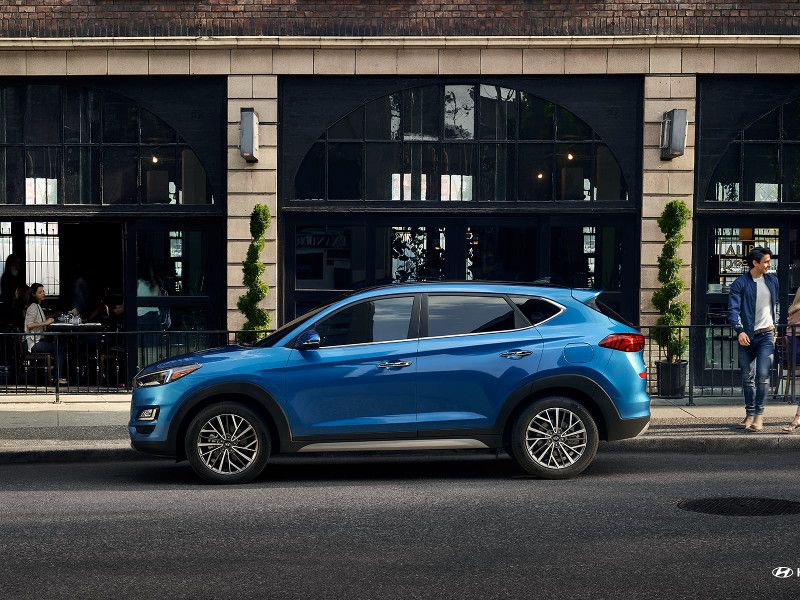
Photo by Hyundai
Pricing and Value
The Hyundai Tucson is a high-quality five-passenger compact crossover that is one of the best values in the category. While it isn’t quite as roomy as some of its competitors and offers relatively mild off-road capabilities, the Tucson will hit the hot-buttons of most buyers in the segment. One area where it especially shines: an easy-to-use interior. We also like the standard safety equipment level.
The least expensive front-drive Tucson SE has an MSRP of $23,350 plus a $1,095 destination charge. A Sport version with all-wheel drive has a suggested retail price of $29,250 plus destination. The top-of-the-line Ultimate trim with all-wheel drive has a base price of $33,100 plus destination. The Tucson also features Hyundai’s warranty coverage, among the best in the industry.
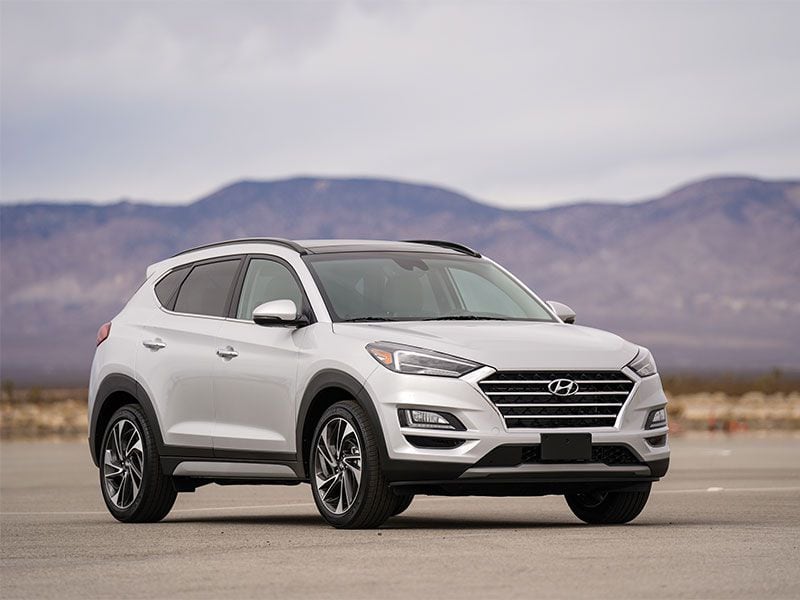
Photo by Hyundai